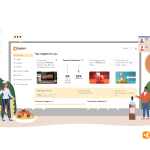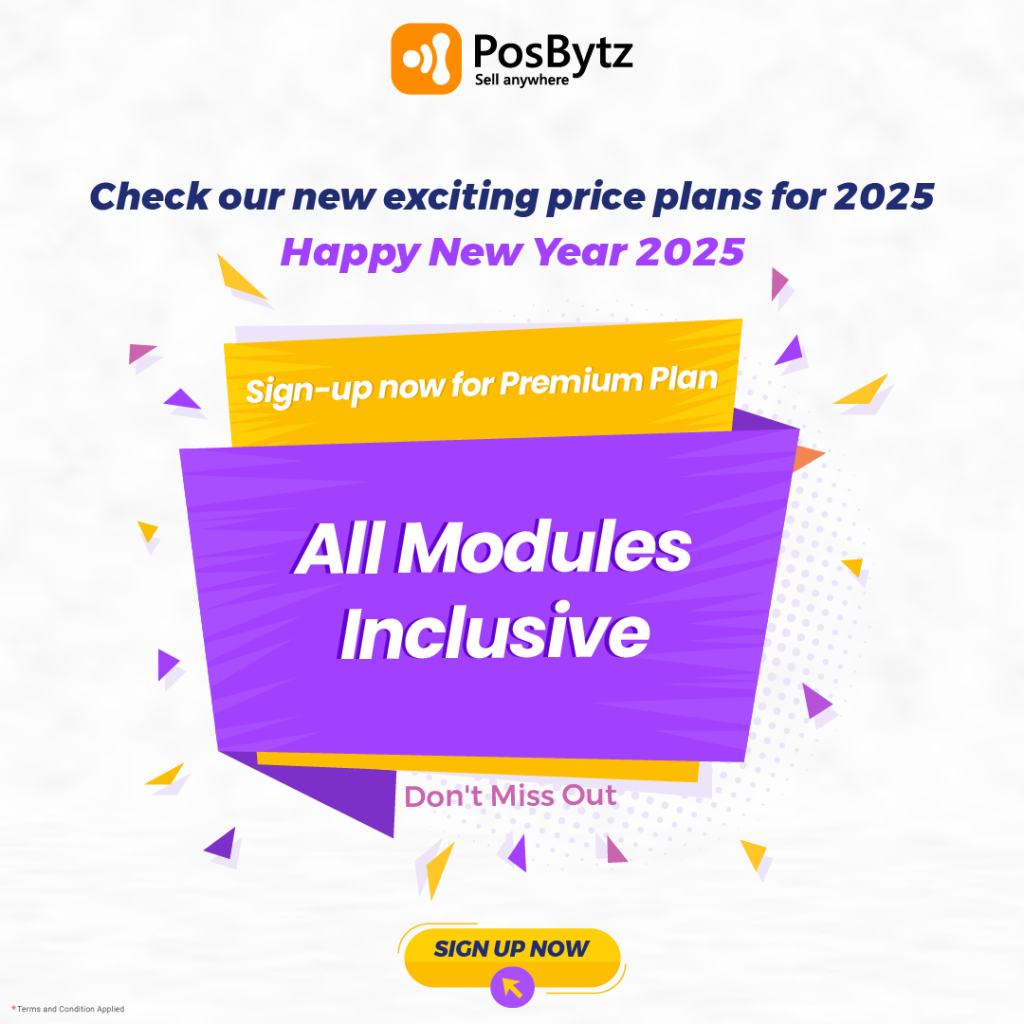- Email:support@posbytz.com
04 Feb
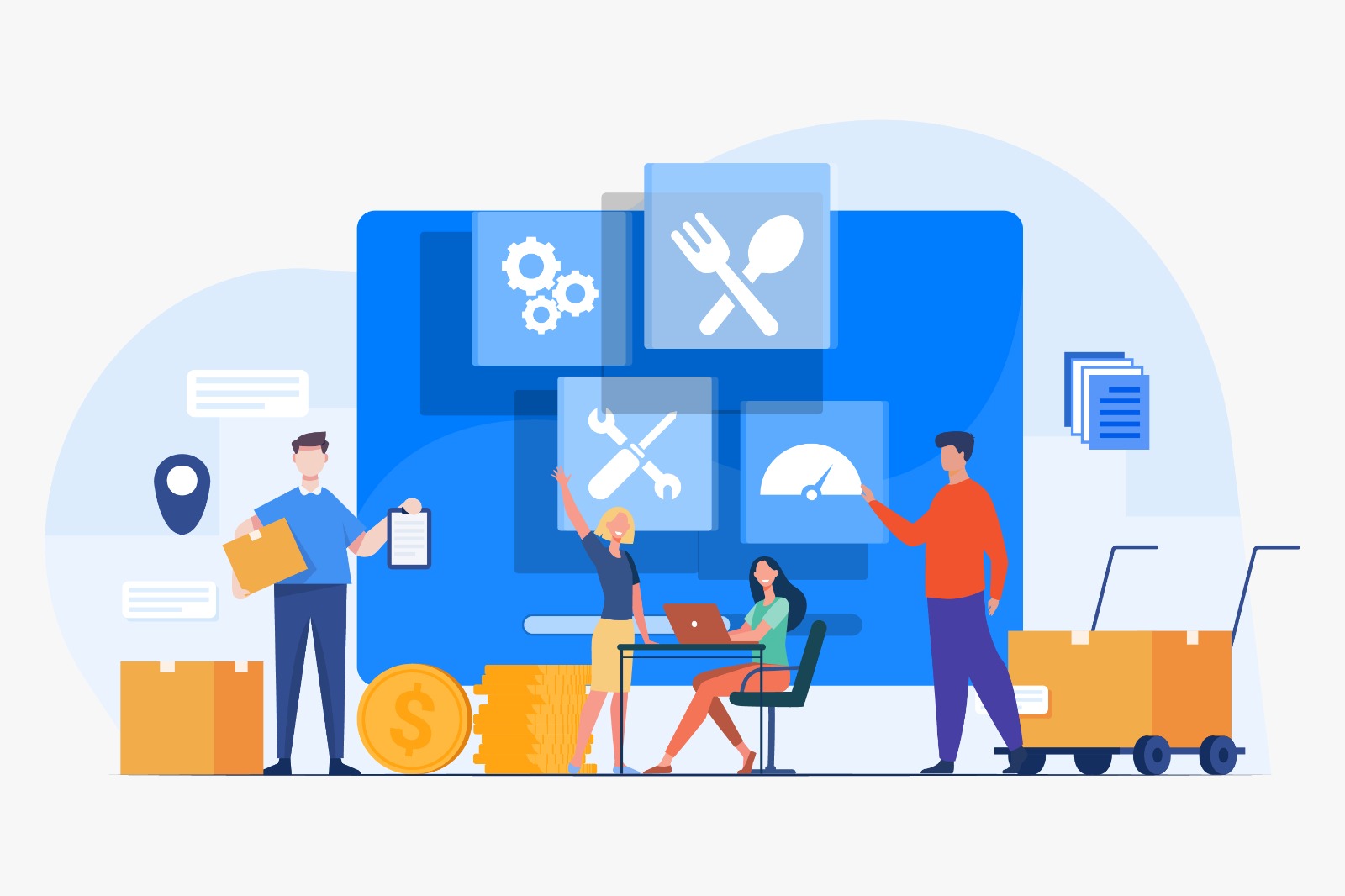
Introduction:
Are you a restaurateur looking for a way to monitor food waste and consumption? In that case, you’ve landed in the right place! The details of restaurant inventory management software are covered in this article.
The cornerstone of any restaurant is its inventory. The expenditures and profitability of your business can be significantly impacted by even the smallest inventory oversight or error. It is more crucial than ever for restaurants to improve their inventory management and gain cost control in today’s unstable climate.
Restaurant prime expenses are rising as a result of rising food prices and ongoing labor costs. Efficient restaurant inventory management is a crucial lever that operators must use to track and reduce expenses.
We’ll provide you with some useful terminology, techniques, and recommendations for managing your inventory so you can keep track of it and count it.
What are you still holding out for? To learn more, start scrolling!
What is Restaurant Inventory Management Software?
Restaurant inventory system can be defined as the software for keeping track of and managing the purchase, ordering, stock at various locations and transportation of stock to show how much of every item you have on hand and make it possible for you to restock those goods to satisfy demand instantly.
A restaurant costing technique called inventory management affects your profitability, food expenses, sales, and cash flow. Keeping too much money in inventory might lead to adverse cash flow and food waste if items aren’t used up before they go bad. However, it becomes difficult to satisfy client demand when there is insufficient inventory.
In essence, managing your restaurant’s inventory serves as both a waste prevention tool and an indicator of your business’s profitability.
Primary Purpose Restaurant Inventory Management :
Restaurant Inventory system primary purpose is to assist businesses in determining how many goods to purchase and when to order them.
Excel and manual counting can be used to manage inventory. However, inventory management software like POSBytz makes the process simpler and improves product tracking and counting. It may also display significant financial and performance information and reorder goods when specified levels are reached.
Benefits Of Restaurant Inventory system:
Restaurants can serve every guest and still have adequate food and materials on hand due to inventory management, which also helps them prevent loss and wastage.
Listed below are a few perks –
- A POS system’s integrated inventory software offers comprehensive insights into the most profitable and popular products.
- The restaurant inventory management software and your POS may be integrated to track even a solitary meal order and how it affects your inventory.
- Understanding the supply levels at a restaurant is possible due to inventory management. Additionally, the system develops automated procedures that refill food supplies in the proper quantities while minimizing waste.
- Staff members may easily and properly track stock using inventory software.
- KPIs and other restaurant data are provided by inventory software, which may lead to more profitable business decisions and better-informed business judgments.
- Restaurants may effectively manage purchases and payouts to vendors by using inventory management to keep a closer eye on their food and purchases.
How To Get Started With Tracking Inventory?
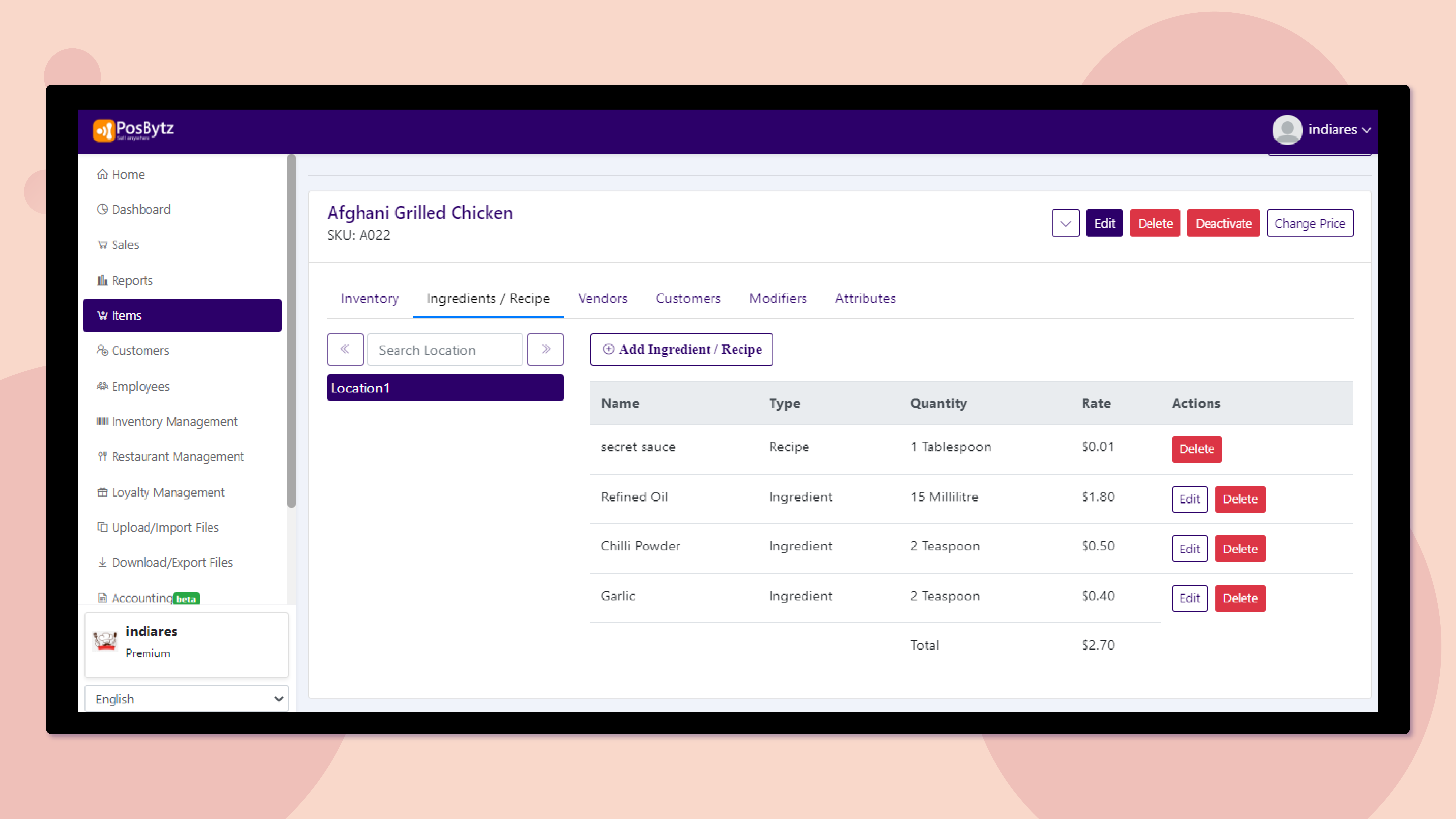
You could take inventory differently based on the scale and kind of your business. The six standard inventory procedures that PosBytz’s professionals propose are outlined below for Instant prepared food (Food prepared when customers place any order)
- Firstly we need to first create the recipes and ingredients. Recipe is one prepared from the ingredients example a Sauce prepared would have consumed ingredients and the sauce would be consumed for every item.
- Add all the recipes and ingredients to the item based on the quantity and type.
- By using a logical unit of measurement, note the quantity of an object. Using hamburger as an example, you may list it by the pound or by the quantity of 10-pound bundles. Additionally, you may keep track of buns by the number of 12-bun packets.
- Each inventory item’s unit price should be noted. The price you recently paid for that item is what you should use. That clarifies the price of products now as well as how much it costs to restock.
- Add the item’s final selling price to the inventory count per unit. Put that figure in the overall cost column.
- Owners and managers choose each item’s “par” level as the lowest quantity they desire to have on hand. A par or minimum stock inventory sheet outlines how much of each item the restaurant should always have on hand as well as when to make additional purchases.
- Add the screenshot of Recipe & ingredient managment
Below are the standard procedures for Pre-prepared food items in kitchens Like Burger patty where the sold items are prepared whole and sold. With PosBytz we can manage through preparation flow. Check the tutorial for Preparation order flow in Posbytz tutorials.
How To Manage Inventory In A Restaurant?
Employ the same working members to individually track inventory regularly to maintain consistency and boost productivity. To automate procedures and ensure more accurate data and reports, consider restaurant inventory management software like POSBytz.
Here are a few pointers for managing restaurant food inventory well:
Use A POS (Point Of Sale) System:
Forecasting, order planning, accounting, and some inventory management are all greatly aided by a POS. The information on your digital platforms has to be verified and updated, so you’ll still need someone or a few people to count your inventory manually.
Track Inventories with Regular Audits:
Cycle counting is the process of regularly measuring and monitoring your inventory to determine how rapidly you are utilizing supplies and meals.
Make an inventory management strategy. It’s recommended to carry out your inventory procedure either before or after business hours.
To maintain consistency, schedule your inventory audit taking for the exact time of day on the same day each week or month. However, you may monitor various stock kinds on various timetables. More perishable food may be tracked every few days, whereas bulk or less often used foods may be tracked once a week or once every other week.
Very simple process, check the stock in your kitchen Vs the stock in your inventory software for the same item if there is any deviation then make sure you are able to account for this deviation if not there is some leakage in your restaurant.
Use PosBytz stock Audit tool to manage your stock Audit seamlessly !
Use The FEFO Inventory Technique:
The First Expiring, First Out (FEFO) inventory approach is what you want to adopt because restaurants depend on perishable items. As a result, you consume the food and supplies that are the oldest first. Your storage facilities’ oldest goods should be placed toward the front and should be easy to obtain.
Waste Management:
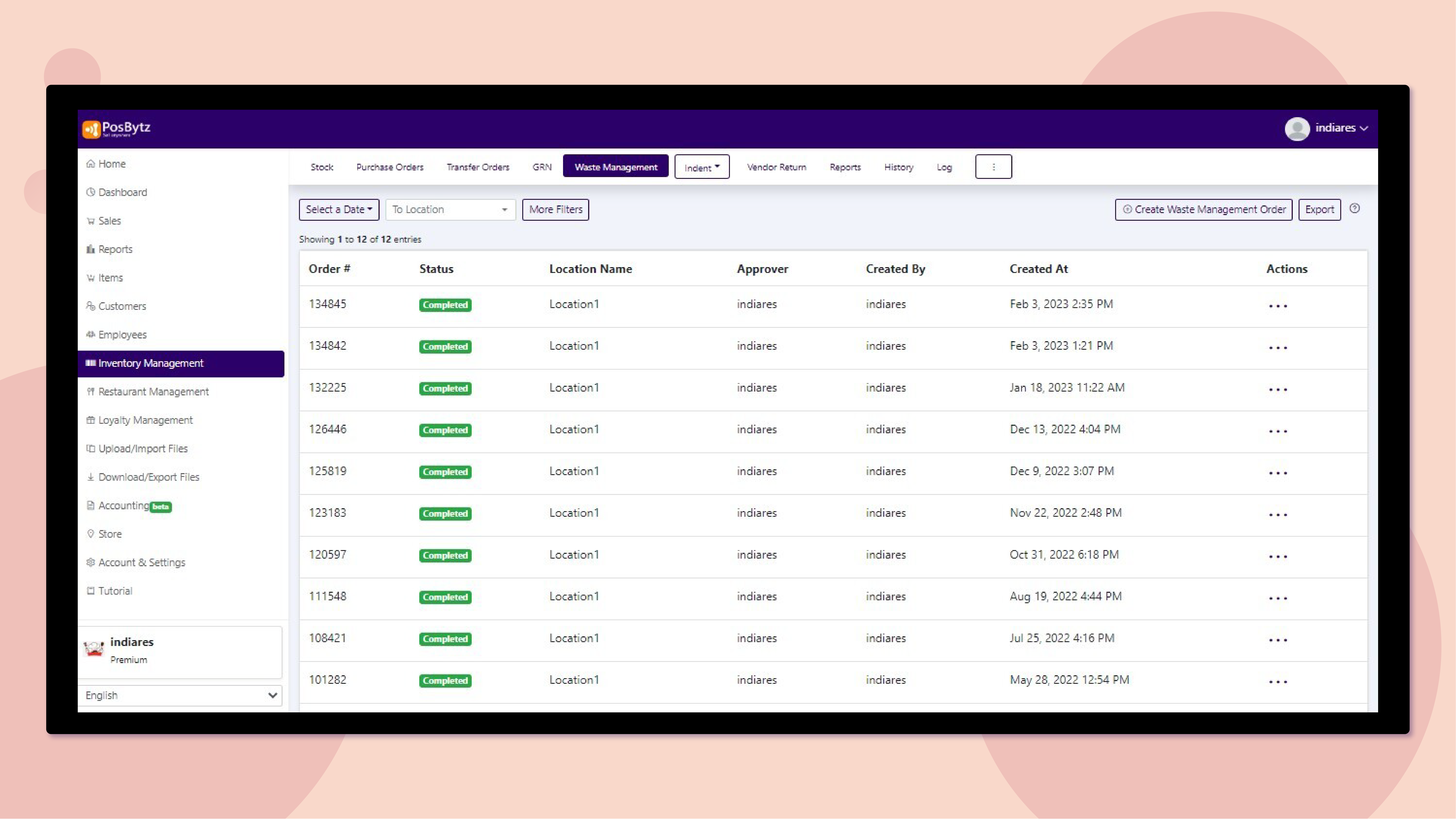
You should keep track of how much food was wasted in other forms or went bad while maintaining inventory on a separate sheet in your inventory database. At the end of day you should post your waste to your inventory system so that stock levels get adjusted accordingly. This will help you to maintain correct inventory and know the P&L
You can find solutions to minimize the loss by keeping an eye on food waste. To identify areas where you may improve and make savings, keep a food waste diary.
Insert the waster managements screen shot
Utilize Your Inventory To Direct Future Purchases:
You should be able to see trends in your use of ingredients and food by regularly taking inventory. Utilize that information to inform your future purchases so that you have the appropriate supply on hand.
What Are Good KPIs To Manage Your Restaurant Inventory Management?
You can get an idea of how effectively you manage the inventory at a restaurant by looking at a few key performance indicators. You may monitor and evaluate these and other KPIs to identify areas doing well and possibilities for development by keeping an eye on revenue, labor expenses, and the costs of items.
The cost of commodities and the loss of products are common indicators. The rest of the good KPIs are:
COGS Cost:
The initial inventory comprises the acquired goods or purchases you have at the beginning of the period, among other crucial KPIs. After, deduct the final inventory. If you want to calculate liquor costs separately from total COGS, the process is the same.
Inventory Turnover:
The inventory turnover ratio is a crucial statistic for figuring out how much stock your company should have since it will offer you greater control over waste, utilization, stock levels, expenditures, and profitability. It displays how frequently the available stock ran out over a specific time frame.
A low inventory turnover ratio denotes that there are surplus inventories on hand or that sales are weak.
In contrast, a high inventory ratio indicates that the inventory acquisition plan is ineffective or that sales are strong.
Food Cost Percentage:
The food cost is expressed as a share of total sales in this KPI.
While we’re talking about these KPIs, do you want to know the formula for each one? But think: why would you need to calculate when you have POSBytz’s inventory management software manually?
How To Pick The Perfect Restaurant Inventory Management Software?
When contemplating buying an inventory management system, weigh the size of your restaurant, the additional software you’ll need to link with, and the cost.
Conclusion:
Restaurants nowadays require a system that records sales, manages inventory, and gives other relevant information about operating the business to help save expenses and boost productivity.
Restaurant owners want a solution that will enable them to manage their operations and boost profitability efficiently.
Remember, POSBytz may assist you whether you’re searching for an entirely new inventory management system or one that will work with your current setup.
FAQs:
How Often Should A Restaurant Do Inventory Audit?
It is based on how frequently your restaurant receives deliveries. Most restaurants perform inventory checks once or twice each week, but it stands to reason to count your goods every time you refill to ensure that everything is current and hasn’t passed its expiration date.
How Much Food Inventory Can A Restaurant Have On Hand?
You simply need to have enough inventory on hand to cover sales, with a little extra for unanticipated circumstances. If you receive 1 to 2 deliveries each week, this typically translates to 5 to 7 days’ supply of inventory for the majority of businesses.
How Restaurant Inventory Affects Net Profit?
One of the key factors affecting net profitability is the total cost of goods sold. By reducing waste, inventory management lowers the cost of items supplied and, eventually, boosts profitability. Your net profit, or what’s left over after costs and taxes, will increase if you have enough inventory to boost sales while avoiding waste.
What Is Restaurant Inventory Control?
The practice of controlling your food and other stock to prevent spoiling and other losses is known as restaurant inventory control. It aids in the scheduling of inventory repurchases.
Why Should Restaurants Care About Inventory Management?
Restaurants that manage and care for their inventories well are more likely to have long-term success. To collaborate with vendors, lower the overall cost of goods, enhance profitability, and keep consumers satisfied, you need to manage your inventory properly.
Best Restaurant Inventory Management Software?
There are multiple restaurant inventory management softwares but PosBytz is one the best where its no just good with inventory management , recipe/ingredients tracking also with inbuilt Accounting modules enables to post accurate cost of Goods Journals and also generate other financial reports like P&L for your business
Does PosBytz supports cafe shops, Cloud kitchens, QSRs and other F&B Business for inventory managment?
Yes, PosBytz supports all the F&B business from QSR, Cafe shops, Food trucks, Cloud kitchen, Bar and Restaurant.
Related Resources
Click here to get more details about PosBytz Restaurant Management system
Recent Posts
- Payroll Software 101: Everything You Need to Know
- Choosing the Best CRM for Restaurants: A Comprehensive Guide
- “Why Every Restaurant Needs CRM Software for Enhanced Customer Engagement”
- Affordable and Efficient: Best Payroll Software for Small Businesses
- Payroll Solutions for Small Businesses: Features, Benefits, and Recommendations
PosBytz is a ERP software for Restaurant and Retail business on cloud with POS, Online ordering, Inventory, Accounting, CRM , Payroll and many more
PosBytz is a product of Inovo Holdings Ltd
